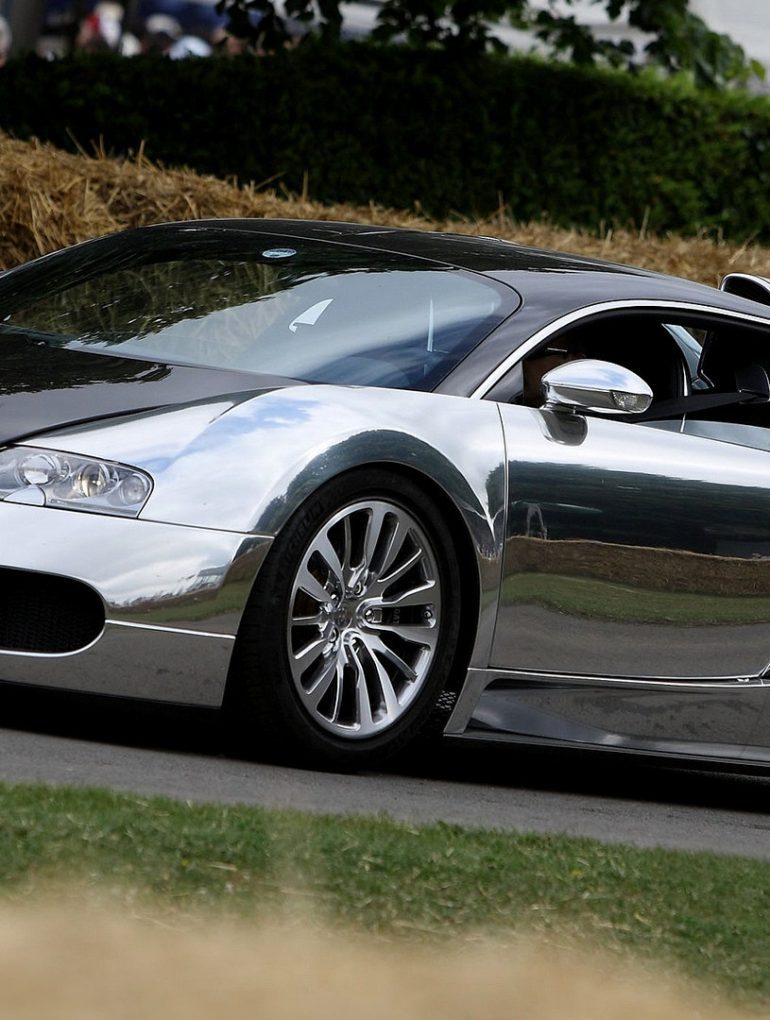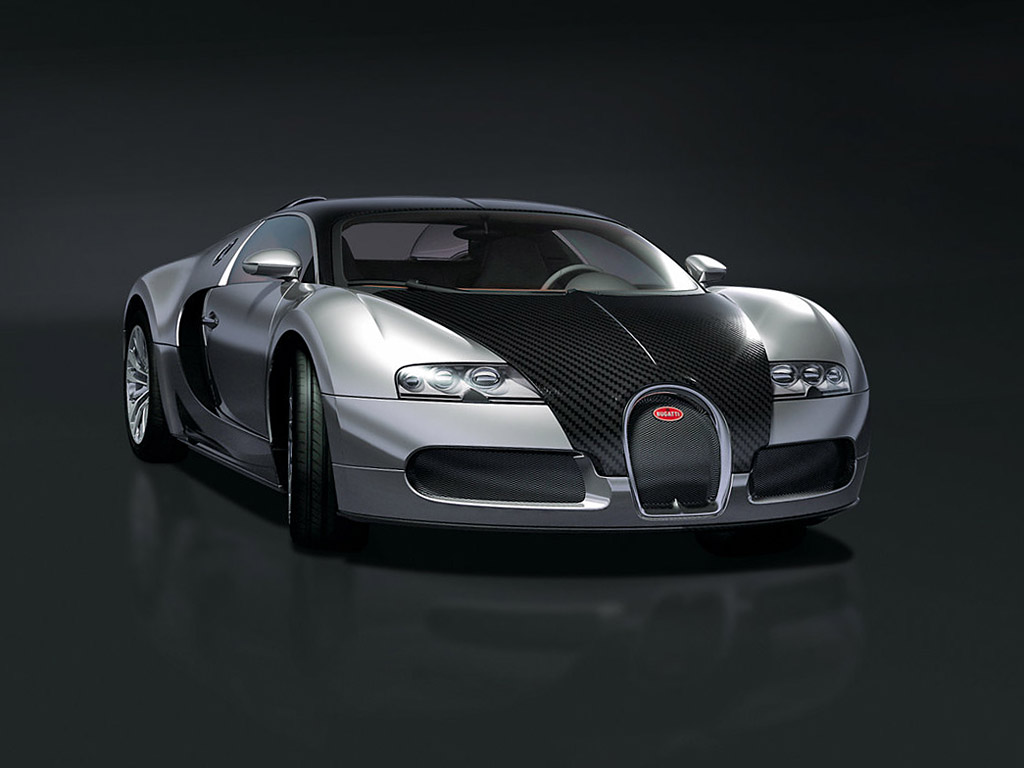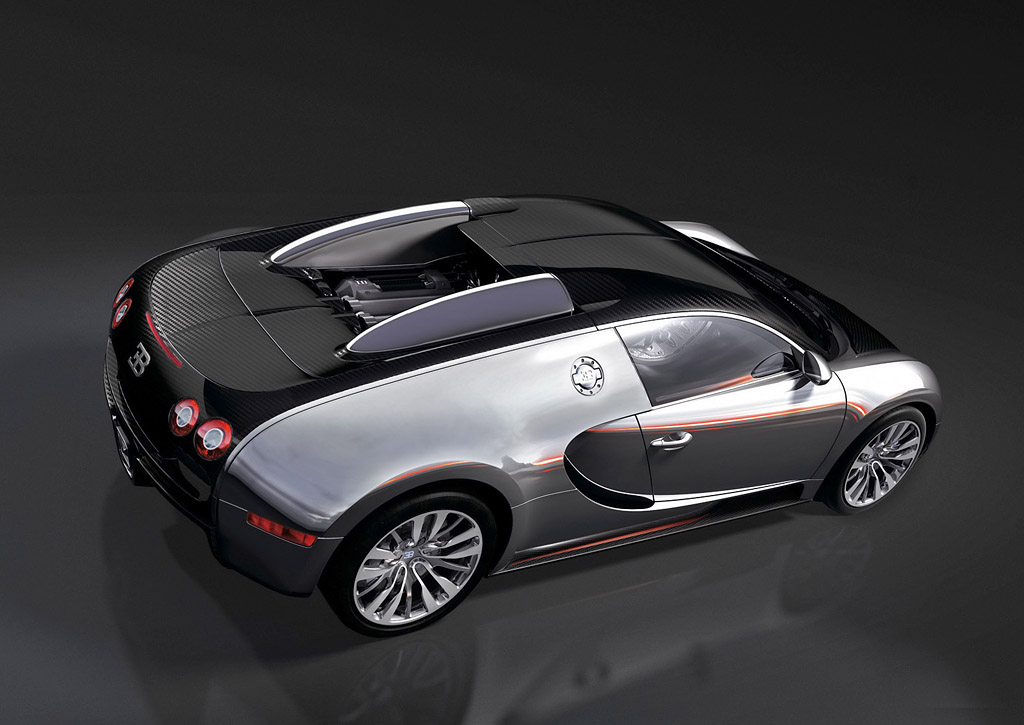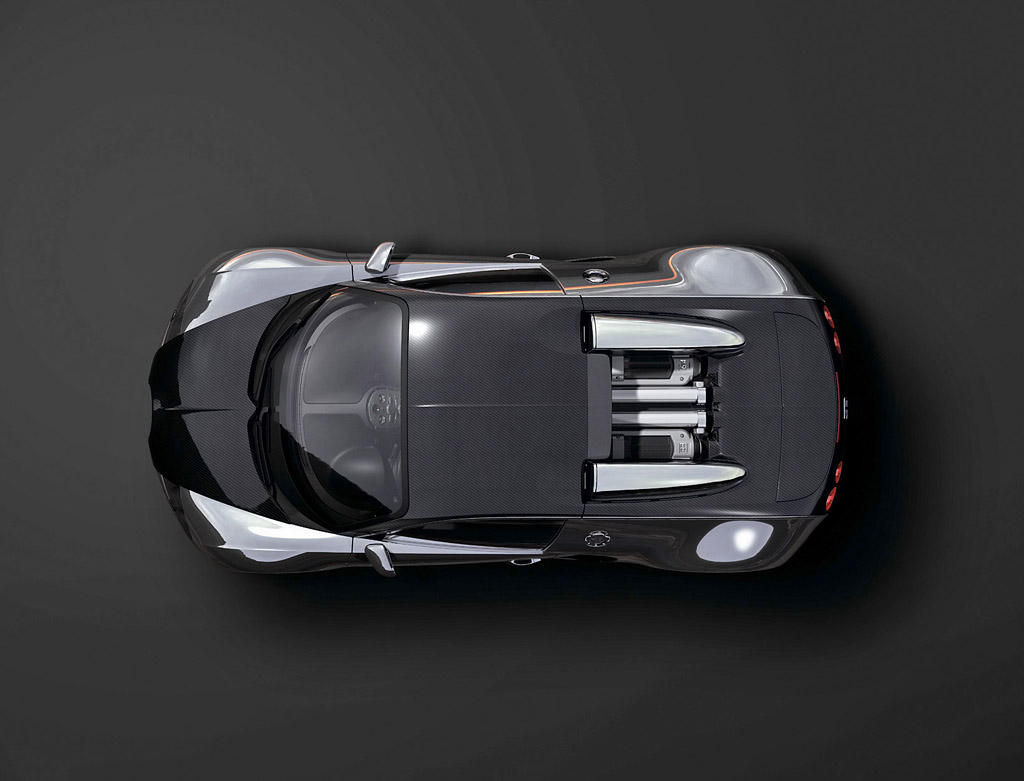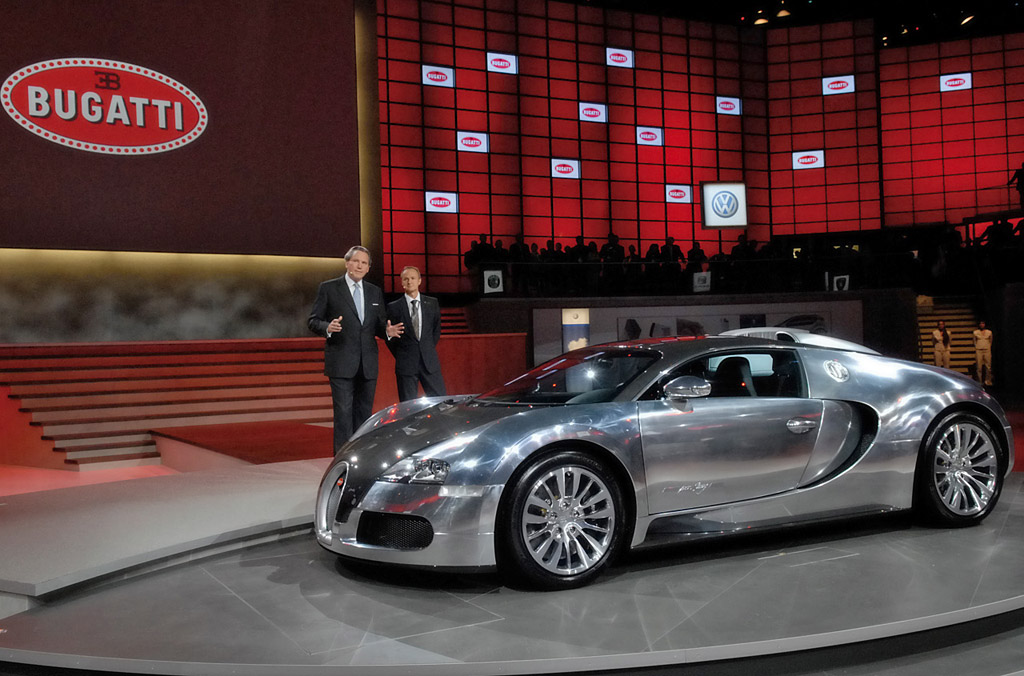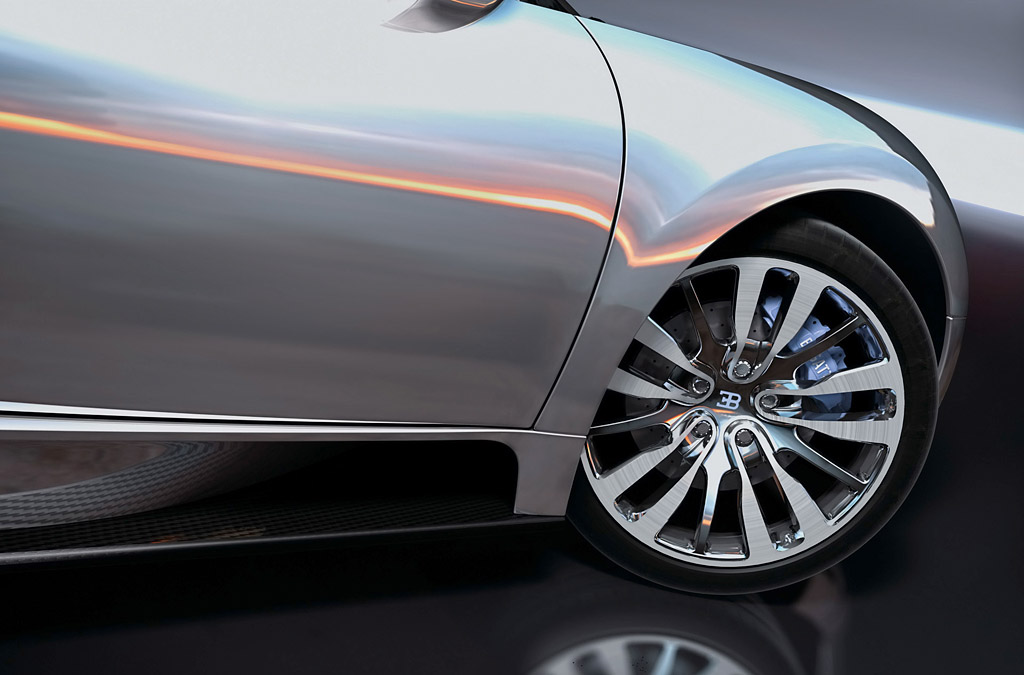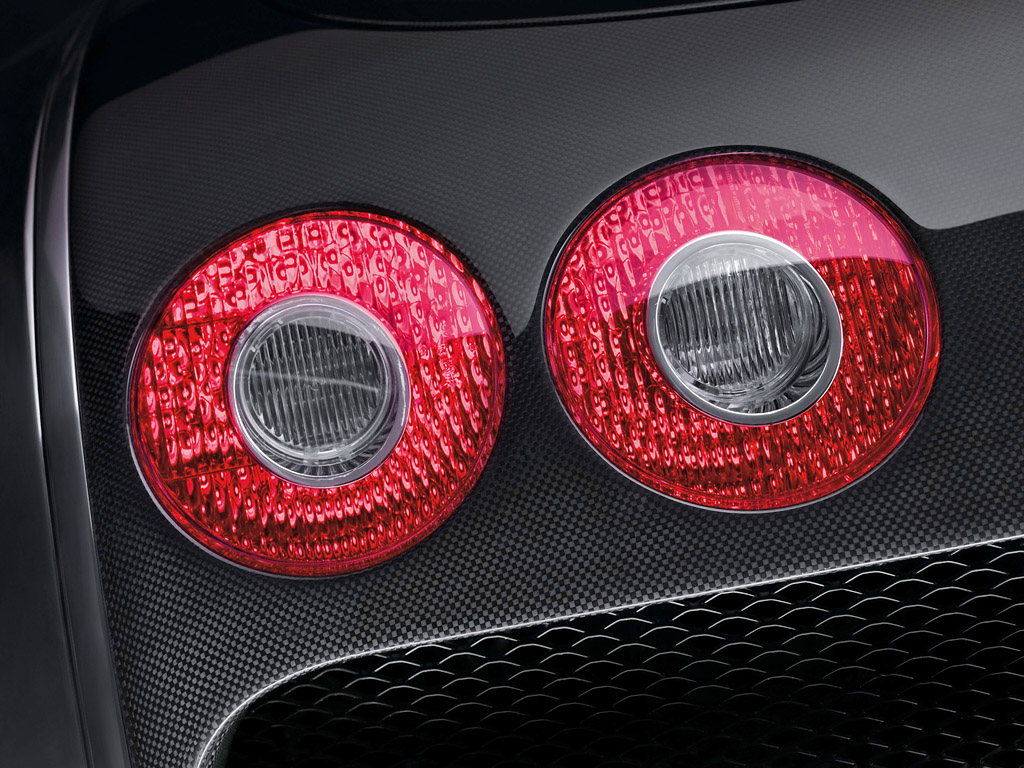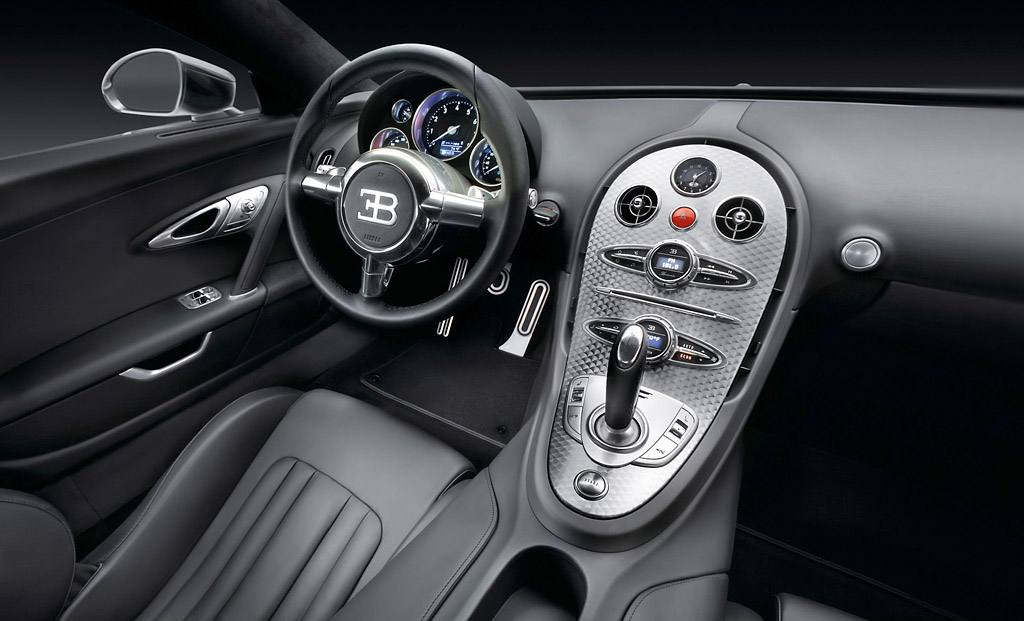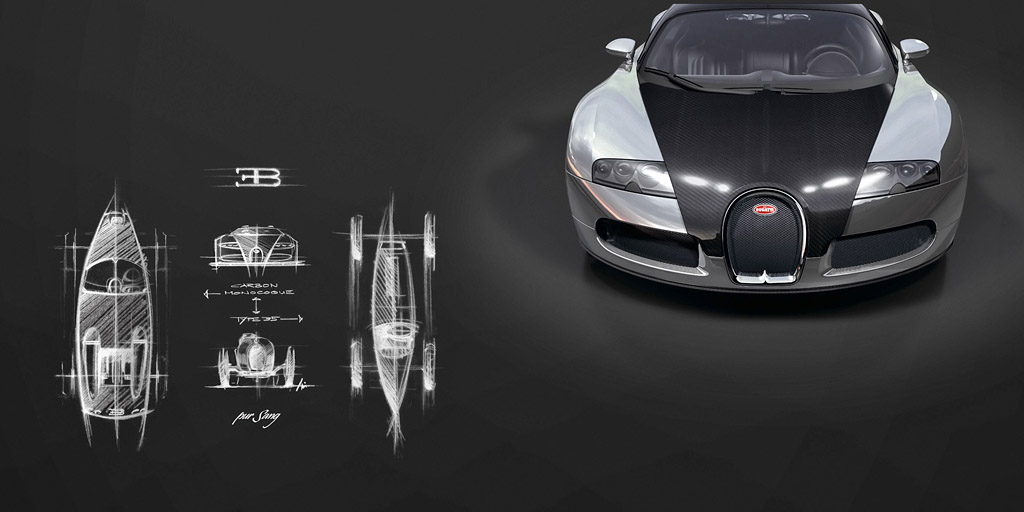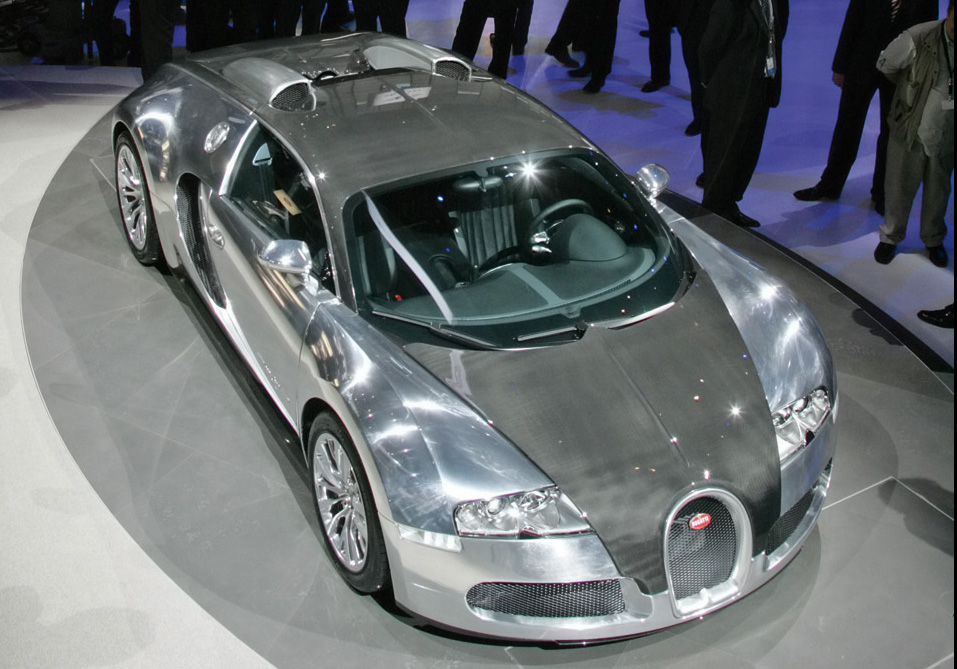2008 Bugatti 16/4 Veyron Pur Sang
Bugatti is presenting a special edition of the EB 16.4 Veyron limited to five worldwide – the Pur Sang – at the Frankfurt International Auto Show. The limited edition will be numerically consigned to the ranks of overall volume designed for 300 cars.
With the Bugatti EB 16.4 Veyron Pur Sang the company is continuing a tradition that produced icons like the T57 SC Atlantic and the numerous versions of the T41 Royale. Then as now Bugatti stands for a unique symbiosis of art, design and technology. Precisely this claim – manifested by company founder Ettore Bugatti and his son Jean – is reflected by the EB 16.4 Veyron Pur Sang, presented in a world premiere in Frankfurt. Reduced to pure design and technology, a car was created here that again was not the means to an end, but in fact had become a work of art in the sum of its parts. The EB 16.4 Veyron Pur Sang completely forgoes exterior paint.
With the Bugatti EB 16.4 Veyron Pur Sang the company is continuing a tradition that produced icons like the T57 SC Atlantic and the numerous versions of the T41 Royale. Then as now Bugatti stands for a unique symbiosis of art, design and technology. Precisely this claim – manifested by company founder Ettore Bugatti and his son Jean – is reflected by the EB 16.4 Veyron Pur Sang, presented in a world premiere in Frankfurt. Reduced to pure design and technology, a car was created here that again was not the means to an end, but in fact had become a work of art in the sum of its parts. The EB 16.4 Veyron Pur Sang completely forgoes exterior paint.
The idea for the EB 16.4 Veyron Pur Sang originated in the Bugatti factory in Molsheim. In what’s referred to as the studio where the high-tech components of the Veyron are assembled with painstaking precision. “When some of our designers were looking at production and once again became aware of the technical beauty of the structure,” says Achim Anscheidt, Head of Bugatti Design, “they came up with the idea of finishing the car in its pure material configuration. And that means without a coating of paint.”
The result is the EB 16.4 Veyron Pur Sang, a study in which carbon and aluminum blend into a unique two-tone color, although no paint is involved. “Interestingly,” explains Anscheidt, “the pure materials used to underscore even more clearly the unified extremes of this car. Power combined with comfort, technical structure and organic bodies, light and dark. A closer look at the details reveals the technical logic behind the stylish appearance. The innovatively designed monocoque carries all main structural components, including the W16 engine, the passenger compartment, the crumple zone and the suspension. It’s precisely this foundation determined by function, made of carbon fiber coated with clear paint, that lies open in view at the heart of the Veyron. The use of aluminum linings is equally forceful. Through the bold and muscular coverings of the wheels as a perfectly designed wing they lend the car its stature and the unique body sculpture. Polished to a mirror finish, these perfectly curved shapes make the fascinating surface reflections visible that characterize the Veyron.”
The balance of the visual impression is especially apparent when viewing the Bugatti from above. “These qualities,” says Achim Anscheidt, “merge into a unique appearance – almost like a painting by Dutch artist Piet Mondrian.” The outstanding representative of classical modern wanted to express the following in his art in the past century: “Beauty across the line and harmony by the balance of relationships between lines, colors and surfaces. But only in the clearest and most powerful way.” This definition has also described a car for over six decades: the EB 16.4 Veyron Pur Sang. The two essential materials of the Pur Sang – thoroughbred in English – examined in detail:
Carbon Body
A car can never be light enough. This principal applies all the more so for the Bugatti Veyron, because it was designed for a sporty high performance. This is why the battle for each kilogram of weight has been one of the big constants in the development history of the Bugatti. Special attention was paid to materials: Only one material was used for each component, guaranteeing the best functionality at the lowest weight. Titanium, magnesium, aluminum and carbon fiber proved to be ideal.
Thanks to carbon fiber construction techniques, the monocoque of the EB 16.4 Veyron Pur Sang is not just especially light, but – as it is known for motorsport – extremely safe. The monocoque is not just a rigid survival compartment, but can also ideally dissipate crash energy through elastic deformation. The main responsibility for this lies with the frames in which the carbon fiber monocoque is integrated – done in aluminum in the front and in combination of the carbon fiber and stainless steel at the back.
Aluminum
The parts made of aluminum show the meticulousness and will to perfection the designers of Bugatti pursued in their work. And this doesn’t just apply to the body. The reason for this is that aluminum is normally a recycled product, resulting in a variety of impurities in the alloys. This has no effect on the characteristics of the material, but on its appearance. After polishing and anodizing the aluminum there can be different degrees of gloss. Not so on the inside of the Veyron, where aluminum is used with the material corresponding to the body shell: If you look closely, you can see that there are no differences in gloss here. Because a single, special alloy is used exclusively in the Veyron: AlMgSi 0.3 Vitral 42. No work is done with other alloys.
All told, 1,888 kilogrammes of net weight stand in contrast to performance of 1,000 hp. This results in a power / weight ration of 1.88 kg/hp (4.15 lbs./hp) an excellent relationship that also positions the 400 km/h fast EB 16.4 Veyron Pur Sang beyond everything previously known.
Bugatti 16/4 Veyron Pur Sang Gallery
See full 2007 Bugatti 16/4 Veyron Pur Sang Gallery
Specs & Performance
| production years | 2008 – 2008 |
| released at | 2007 Frankfurt |
| built at | Molsheim, French |
| body stylist | Achim Anscheidt |
| production | 5 |
| price $ | $1,900,000 USD |
| engine | Aluminum, Narrow Angle W16 |
| position | Mid Longitudinal |
| aspiration | Quad Turbocharged |
| block material | Forged Aluminum Alloy |
| valvetrain | DOHC 4 Valves / Cyl w/VVT |
| fuel feed | Multi-point Electronic Sequential Indirect Injection |
| displacement | 7993 cc / 487.8 in³ |
| bore | 86 mm / 3.39 in |
| stroke | 86 mm / 3.39 in |
| compression | 9.0:1 |
| power | 746.5 kw / 1001 bhp @ 6000 rpm |
| specific output | 125.23 bhp per litre |
| bhp/weight | 530.19 bhp per tonne |
| torque | 1250 nm / 922.0 ft lbs @ -3300 rpm |
| redline | 6500 |
| body / frame | Aluminum Panels over Carbon Fibre Monocoque w/Aluminum Front Subframe, Hybrid V Carbon/Stainless Steel Rear Subframe |
| driven wheels | 4WD |
| wheel type | Cast Aluminum |
| front tires | 265/680ZR500A 99Y Michelin Pilot Sport |
| rear tires | 365/710ZR540A 108Y Michelin Pilot Sport |
| front brakes | Ventilated & Drilled Discs w/ABS |
| rear brakes | Ventilated & Drilled Discs w/ABS |
| front wheels | F 50.8 x 28.4 cm / 21 x 14.4 in |
| rear wheels | R 53.3 x 36.6 cm / 21 x 14.4 in |
| f suspension | Control Arms w/Coil Springs, Anti-Roll Bar |
| r suspension | Control Arms w/Coil Springs, Anti-Roll Bar |
| curb weight | 1888 kg / 4162 lbs |
| wheelbase | 2710 mm / 106.7 in |
| front track | 1715 mm / 67.5 in |
| rear track | 1618 mm / 63.7 in |
| length | 4463 mm / 175.7 in |
| width | 1999 mm / 78.7 in |
| height | 1212 mm / 47.7 in |
| transmission | 7-Speed DSG w/Haldex Clutch |
| top speed | ~407.2 kph / 253 mph |
| 0 – 60 mph | ~2.6 seconds |
| 0 – 100 mph | ~5.7 seconds |
| 0 – 1/4 mile | ~10.3 seconds |


